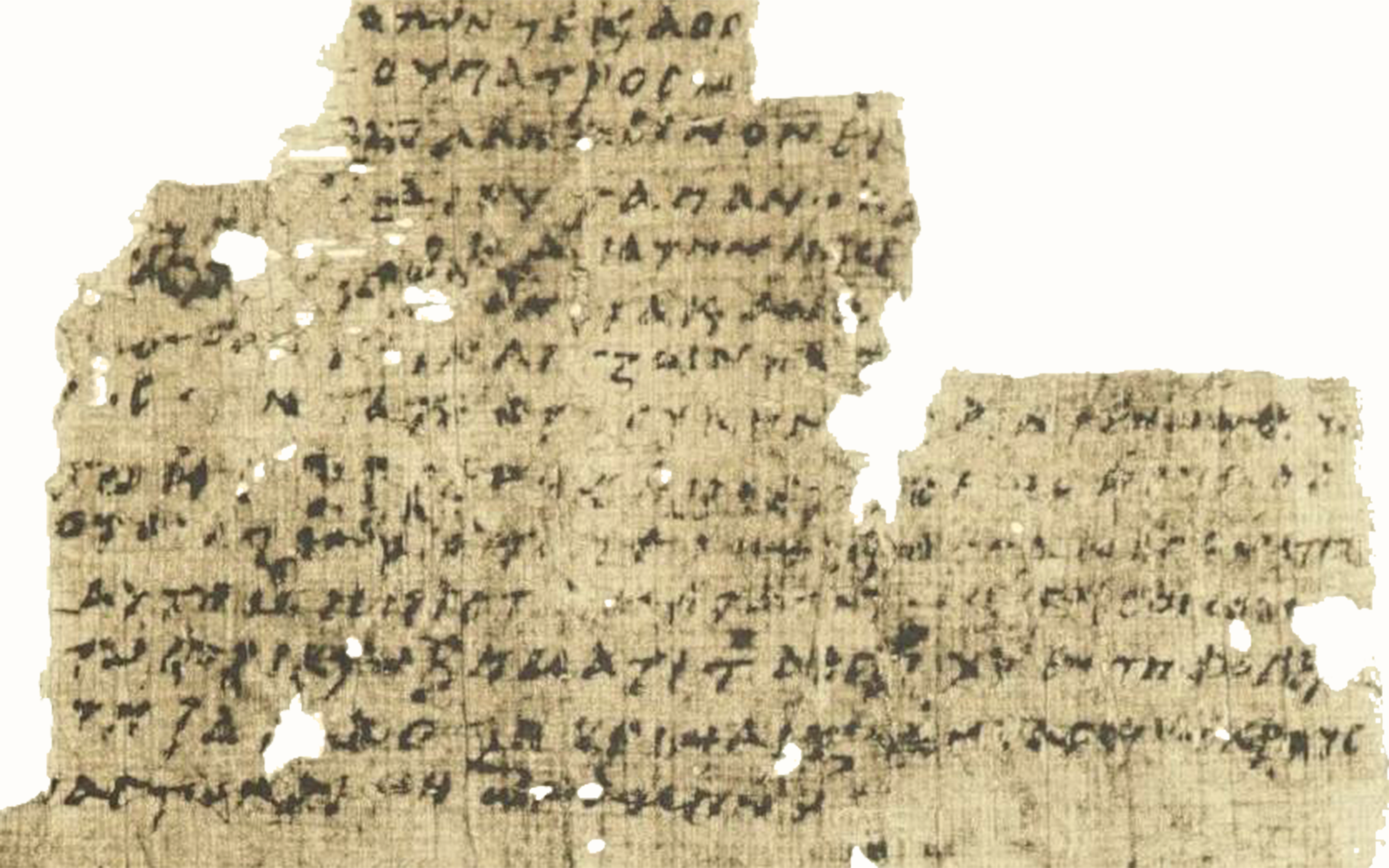Of all the special anniversaries and observances you are planning to commemorate this year, I’m guessing that not many of us have this one marked on our calendars: “Celebrate 1,700th anniversary of the Nicene Creed.”
But I invite you to spend a few moments doing just that.
An Ancient and Unifying Standard
It was all the way back in 325 A.D. that the Nicene Creed got its start at a council of church leaders in Nicaea, a city that was part of what we now know as Turkey.
Seventeen hundred years is a long time—seventy generations. And for all that time, century upon century, the Nicene Creed has been believed and memorized and confessed by Christians as a standard of their faith.
The Nicene Creed also has been and continues to be a key symbol of the unity of the church of Jesus Christ. While there might be some important things that divide us, the Nicene Creed bears witness to the shared faith of Christians around the world. It is claimed as a doctrinal standard by Orthodox, Catholic, and most Protestant churches, thus representing the vast majority of Christians. It is spoken regularly in worship in many of those churches, making these words among the most recited throughout history and in the world today.
Reciting creeds in worship is not as common in Christian Reformed congregations today as it has been in the past, but the Nicene Creed is one of the three creeds (including also the Apostles’ Creed and the Athanasian Creed) that, when combined with our three confessions (the Belgic Confession, the Heidelberg Catechism, and the Canons of Dort), summarize our beliefs as a church. While we understand the Bible to be the only infallible and authoritative text for our faith, these creeds and confessions guide and form our understanding of what the Scripture teaches.
What Is a Creed?
The word “creed” is just a shortened form of the Latin word credo, which means “I believe.” So a creed is a statement of belief. It summarizes in a brief, memorable form the basic teachings of the faith.
If you are familiar with the Apostles’ Creed, you recognize much of the Nicene Creed. That’s because the Nicene Creed is an expansion of that earlier creed, which in turn had its origin in the baptismal confession of new believers. Before they were baptized, they would be asked if they believed in God; Jesus Christ, God’s Son; and the Holy Spirit. Each time, they would respond, “I believe.” And then they would be baptized in the name of Father, Son, and Holy Spirit. This trinitarian confession was later formulated into the Apostles’ Creed.
But even as they believed, confessed, and were baptized into this triune name, those early believers wrestled with an important question: What is the relationship between the Father, the Son, and the Holy Spirit? Are they all God? And if so, are they three gods? This is the question the Nicene Creed was written to address.
One God
If there was one thing God’s people in the Old Testament learned in the long history of God’s gracious dealings with them, it was that there is one God, and that God alone is to be worshiped and served. This central belief is recited morning and evening as a mini-creed to this day by Jews in the Shema: “Hear, O Israel: The LORD our God, the LORD is one. Love the LORD your God with all your heart and with all your soul and with all your strength” (Deut. 6:4).
The church of Jesus grew out of the soil of the Old Testament, and Jesus and the rest of the New Testament affirmed this Old Testament teaching as authoritative for himself and his followers. Jesus claimed the one God, the God of Abraham, as his own Father—and our Father as well—and prayed that we would be in him as he is in the Father (John 17:20-23).
Who Is Jesus?
But Jesus, the faithful and obedient son of Israel, is revealed in the New Testament to be much more than an ordinary human. He was the very Son of God sent down from the Father.
He said things like, “Before Abraham was born, I am!”—claiming both his own pre-existence and the divine name in one astonishing assertion (John 8:58).
Jesus also revealed, particularly in the gospel of John, the close relationship he has with the Father, saying things such as “I and the Father are one” and “Anyone who has seen me has seen the Father” and “I am in the Father and the Father is in me” (John 10:30; 14:9, 11).
In response to these revelations, the first disciples called Jesus “Lord,” a title that was also the one used for God in the Greek translation of the Old Testament. And in at least seven places in the New Testament, Jesus is directly called “God” (John 1:1; 20:28; Rom. 9:5; Titus 2:13; Heb. 1:8; and 2 Pet. 1:1).
Jesus’ followers also worshiped him, something Jewish believers reserved for God alone (see Matt. 2:11; 14:33; 28:9; Luke 24:52; John 9:38). In the vision of the heavenly throne room in Revelation 4-5, both God the Father and Jesus the Lamb are worshiped together by the whole creation.
One and Three
But how do these two truths fit together—that there is only one God, but also that both Jesus and the Father are divine? One answer given by a pastor named Arius early in the fourth century ignited the controversy that led to the Nicene Creed. He argued that since there is only one God, Jesus is not God, but rather a creature of God. He thought Jesus was a sort of super-angel: glorious like God, but not eternal with God nor fully divine. This teaching disturbed the church, and in A.D. 325 Constantine, the first Christian emperor, called the Council of Nicaea to address this question. A bishop named Athanasius (our third creed is named after him) championed what became the position of the council, arguing that Jesus was God from eternity and had the same nature as the Father. As the Nicence Creed says, Jesus is “God from God, light from light, true God from true God, begotten, not made; of the same essence as the Father.”
It would take another 60 years of theological wrangling after the Council of Nicaea for the church to come to a consensus that this understanding truly reflects the Bible’s teaching. Politics complicated things (as it is known to do) as various emperors supported either the teachings of the Arians or of the Nicenes in turn.
And what about the Holy Spirit? After much debate, a second council at Constantinople established the church’s teaching about the Spirit and added them to the creed in 381. The council judged that the Holy Spirit is also a distinct person of the Trinity: eternal, fully divine, and properly called “Lord” and “Giver of Life,” who “‘with the Father and the Son is worshiped and glorified.”
For 1,700 years the Nicene Creed has defined our trinitarian faith—that God is one, but eternally exists in three persons as Father, Son, and Holy Spirit. There is mystery here, but for Christians it is not simply a mystery of ignorance, but a mystery of glory and of adoration. The creed reminds us that it is this one God who, as Father, Son, and Holy Spirit, has created us, redeemed us, and is sanctifying us to live with and worship God forever in the splendor of God’s triune majesty.
Happy anniversary, Nicene Creed!
The Nicene Creed
We believe in one God,
the Father almighty,
maker of heaven and earth,
of all things visible and invisible.
And in one Lord Jesus Christ,
the only Son of God,
begotten from the Father before all ages,
God from God,
Light from Light,
true God from true God,
begotten, not made;
of the same essence as the Father.
Through him all things were made.
For us and for our salvation
he came down from heaven;
he became incarnate by the Holy Spirit and the virgin Mary,
and was made human.
He was crucified for us under Pontius Pilate;
he suffered and was buried.
The third day he rose again, according to the Scriptures.
He ascended to heaven
and is seated at the right hand of the Father.
He will come again with glory
to judge the living and the dead.
His kingdom will never end.
And we believe in the Holy Spirit,
the Lord, the giver of life.
He proceeds from the Father and the Son,
and with the Father and the Son is worshiped and glorified.
He spoke through the prophets.
We believe in one holy catholic and apostolic church.
We affirm one baptism for the forgiveness of sins.
We look forward to the resurrection of the dead,
and to life in the world to come. Amen.
About the Author
Tim Howerzyl is a member of Bauer Christian Reformed Church in Hudsonville, Mich., and teaches theology and ministry at Kuyper College.








